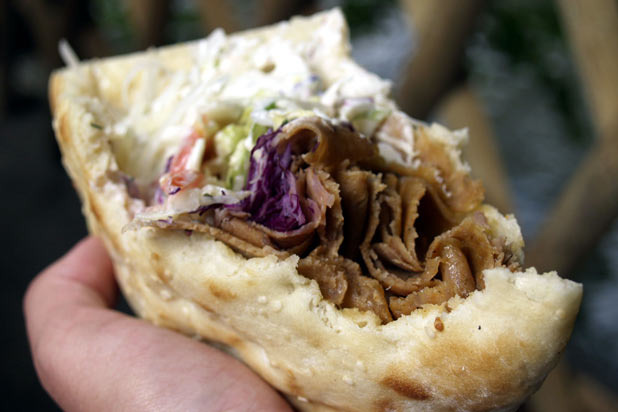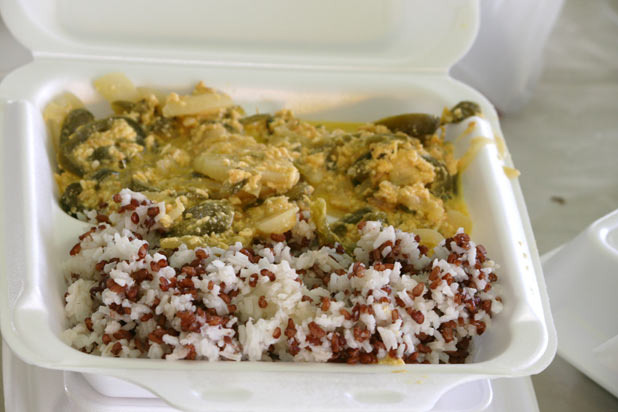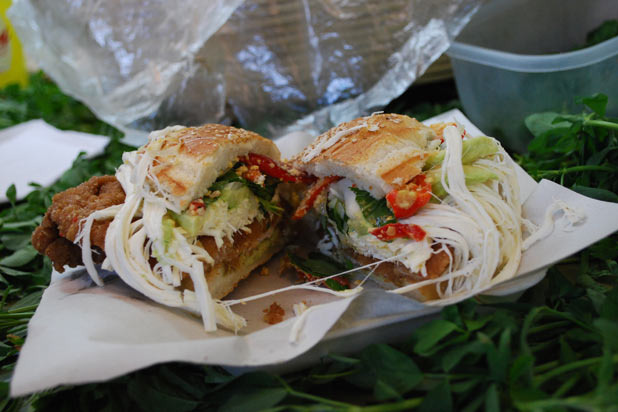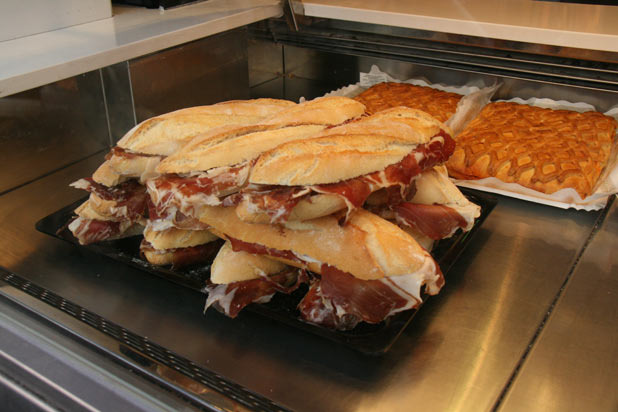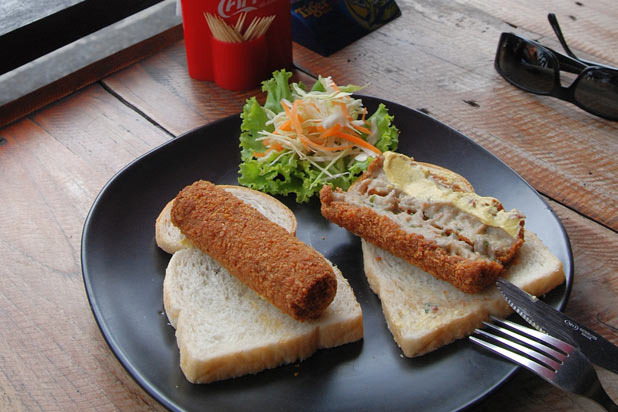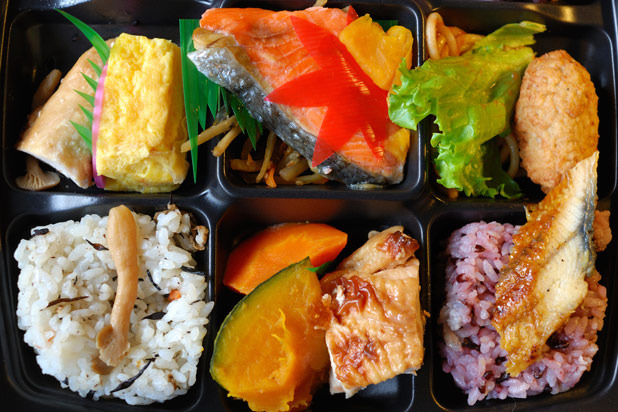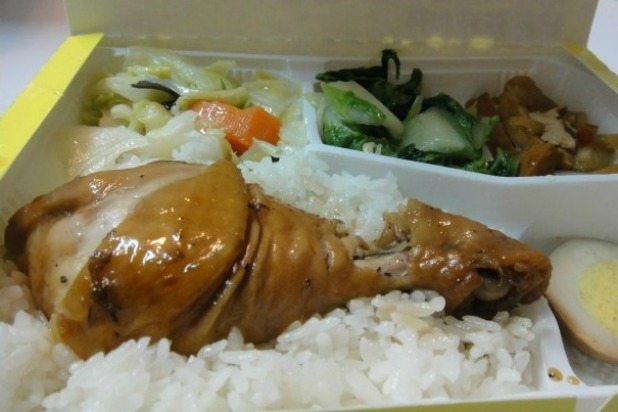See What The World Eats For Lunch Slideshow
Bánh Mì (Vietnam)
The bánh mìis based on the Parisian ham and pâté baguette sandwich, which was brought to the streets of Vietnam in the early 20th century during the French colonial period. The quintessential Vietnamese street vendor staple, the bánh mì, is a crusty French-style baguette stuffed with home-cured meats like pork belly or pork liver pâté, cilantro, pickled cucumber, carrot and daikon, chile peppers, and mayonnaise. Street vendors from Hanoi to Ho Chi Minh City sell the ubiquitous sandwiches, which have been a favored lunch for decades.
Fish and Chips (United Kingdom)
While fish and chips has become synonymous with the U.K., the origin of this mainstay of more than 150 years is not so "British." The chips, or french fries, originated in France or Belgium, and fried fish was introduced to Britain by Portugal and Spain, according to the BBC. Enterprising Brits decided to serve battered cod or haddock and chips together in the mid-1800s. Traditional fish and chips were wrapped in old newspaper to save money, but nowadays grease-proof paper is put between the greasy snack and the newspaper, or specially designed paper with faux newspaper print is used. Fish and chips is such a treasured treat in Britain that it was one of the few foods that was not rationed during World War II. Fish and chips is served with salt and vinegar, tartar sauce, or ketchup, and sometimes a side of mushy peas.
Shawarma (Turkey)
A staple of street-side vendors and small shop owners, shawarma is an inexpensive fast-food meal found throughout the Middle East. Lamb, chicken, or other meats are stacked with layers of fat and placed on a vertical spit and grilled for hours. Once ready, vendors shave slices of the tender meat onto pita and pile on a variety of toppings like cucumbers, tomato, onion, pickled turnip, toum, tabbouleh, fattoush, tahini, or hummus. Some vendors also stuff french fries into the shawarma.
Amok Trei (Cambodia)
Often served as a sit-down meal in a restaurant or at home, amok trei is a non-spicy, curry-like fish and rice dish. The fish is first coated in coconut milk with kroeung, a Khmer spice, and Chinese ginger and then is traditionally steamed or baked in banana leaves. The creamy fish is served over white rice, making it a favored comfort food.
Ema Datshi (Bhutan)
Ema datshi is a fiery stew made of dry or fresh green, red, or white chile peppers and cow or yak cheese that is served with Bhutanese red rice. Grown in the Eastern Himalayas, the medium-grain rice maintains its reddish pink color from the semi-milled bran in it and has a slightly sticky consistency. The simple meal, often considered Bhutan's national dish, is smothered in gooey cheese and bursting with heat from the peppers.
Cemita (Mexico)
Hailing from Puebla, Mexico, the cemita is a sandwich stacked high with layers of avocado, meat, panela (a white, smooth, bland cheese), pickled onions, and salsa, all sandwiched between a fluffy sesame-seed egg roll. The meat inside cemitas varies from beef milanesa (pounded, breaded, and fried beef) to pickled pig skin or carnitas. Street vendors, markets, and restaurants serve the popular sandwich.
Bocadillo de Tortilla de Patata (Spain)
Cafés and tapas bars across Spain serve bocadillos, or sandwiches served on crusty and airy Spanish bread that is similar to a French baguette. There are many varieties of bocadillos, including bocadillo de tortilla de patata and bocadillo de jamón. The tortilla de patata features a thick egg omelette stuffed with potatoes that is fried in olive oil, and the bocadillo de jamón is stuffed with serrano ham and manchego cheese, a firm cheese made from sheep's milk.
Broodje (Netherlands)
Broodje are sandwiches, which have been a mainstay at lunch in the Netherlands. There's even an annual contest for the Tastiest Sandwich of the Year. In a country that consumes copious amounts of bread, sandwiches in a multitude of flavors are readily available at supermarkets, fast-food joints, and street stalls. The broodje kroket is a simple, deep-fried meat croquette sandwiched between two slices of bread, while the broodje bal is the Dutch version of a meatball sandwich. There's also the uitsmijter, an open-faced sandwich with ham, cheese, and two sunny-side up eggs, but variations on this meat, cheese, and egg combination exist, and are often served at lunch but also at breakfast and as a late-night snack.
Porilainen (Finland)
The humble porilainen is a thick slice of sausage garnished with diced sweet onion, pickled cucumber, ketchup, mustard, and mayonnaise, served on a two slices of white bread or a bun. A staple of fast-food restaurants and street stalls, the portable porilainen are often eaten on-the-go in Finland.
Bento Box (Japan)
While bento box lunches are often seen on menus at Japanese restaurants worldwide, traditional bento boxes () are served in disposable, compartmentalized boxes or in plastic or lacquer square or rectangular containers. Some are wrapped in cloth, which acts not only as a bag but also as a placemat. While Japanese restaurants in the U.S. have bento lunches that can include white rice, teriyaki meat, and sushi, or tempura, vegetables, a California roll, soup, and salad served in a compartmentalized tray, traditional bento boxes served at restaurants and train stations in Japan are simple, small lunches featuring white rice, meat or fish like broiled salmon, and one or more pickled vegetables.
Bento boxes are also often prepared at home, and making one's own bento is a high art in Japan. Some bento boxes have stackable compartments and feature cartoon characters like Hello Kitty. Elaborately made bento boxes, in which the food is arranged to look like Japanese cartoon characters, are known as kyaraben, and many parents in Japan spend hours creating edible art for their children or themselves to enjoy at lunchtime.
Tiffin (India)
Dating back to the days of British colonialism, tiffins are homemade lunches placed in stackable, cylindrical aluminum containers fastened with a handle. Tiffins are most popular in Mumbai and are often eaten by workers and schoolchildren. Most tiffin lunches are made at home and then delivered to workplaces and schools by dabba-wallahs, messengers who travel by train and bicycle to deliver the meals. Some catering companies also sell commercially prepared tiffin lunches. Each metal tiffin has a set of numbers and colors painted on it to denote its destination. The elaborate delivery system is so accurate that rarely does one of the hundreds of thousands of tiffins that traverse Mumbai's streets go missing or arrive late.
Tiffins contain Indian meals like rotis, chapatis, dosas, and curries, along with rice, dhal, and other traditional treats. Once the lunches are eaten, the used tiffins are picked up and delivered back home.
Baon (Philippines)
Baon are homemade lunches packed in containers that look similar to Tupperware and are traditionally eaten by schoolchildren in the Philippines. Baon may contain a variety of traditional hot meals, like pork adobo and boiled rice with buttered or boiled vegetables, fried fish, beef tapa (dried or cured beef), meat omelette, dried longganisa (sausage) accompanied with atsara (pickled unripe papaya), sautéed abitsuelas (a type of green beans), or Western-style sandwiches like tuna salad or egg salad.
Dosirak (Korea)
Dosirak () are packed lunches served in plastic or wooden containers with or without compartments. Though dosirak are usually homemade, some restaurants serve them, appealing to those feeling nostalgic for their youth. Dosirak contain hot or cold meals like meat, vegetables, rice, and other side items like gochujang (a fermented, red chile condiment), dried seaweed, and egg, which are crammed together and sometimes shaken prior to eating to equally distribute the contents.
Bian Dang (Taiwan and China)
Millions of Chinese eat bian dang (), called he fan ( ) in China, which are based on the Japanese bento box. Served in a small, rectangular cardboard box with an attached fold-over lid and fastened with a rubber band, the inexpensive meals of white rice or noodles, meat (typically pork, chicken, or fish), and one to three stir-fried or steamed vegetables like tofu, cabbage, and bamboo, are eaten by workers, schoolchildren, and travelers on trains and buses.
Some bian dang have four compartments — one for the rice and meat and three small squares for the vegetables. Bian dang are either pre-packed at restaurants and street stalls and delivered by bicycle or motor scooter to offices and schools, or are self-made at buffets where patrons can fill up the boxes with unlimited meats, vegetables, and side dishes and pay by weight. Often bian dang is served with a complimentary side of clear soup.
